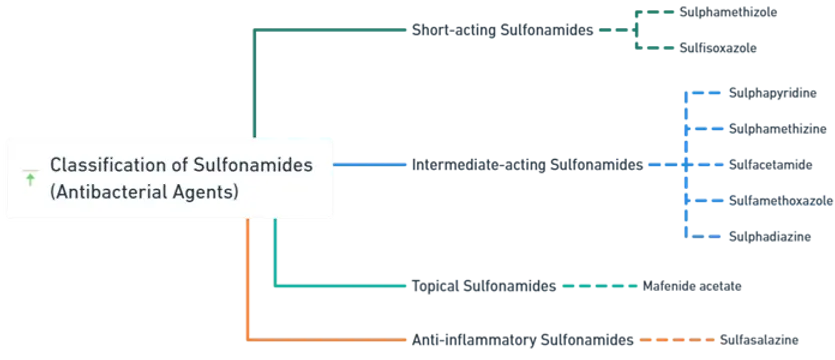Sulfonamides and Sulfones
- sachinkumar244
- Apr 3
- 2 min read
Introduction
Sulfonamides and sulfones are antimicrobial agents that inhibit bacterial growth by targeting folic acid synthesis, a crucial pathway for bacterial survival.
Historical Development
Sulfonamides were the first synthetic antibacterial agents, discovered in the 1930s.
Sulfones, like Dapsone, emerged later and became essential for treating leprosy and other bacterial infections.
Chemistry & Structure-Activity Relationship (SAR)
Sulfonamides contain a sulfonyl functional group (-SO₂NH₂) attached to an aromatic ring, crucial for antibacterial activity.
Modifications in the R-groups affect solubility, potency, and spectrum of activity.
They act as competitive inhibitors of dihydropteroate synthase, blocking folic acid synthesis.
Classification of Sulfonamides (Antibacterial Agents)

1) Short-acting Sulfonamides
Sulphamethizole
Sulfisoxazole
2) Intermediate-acting Sulfonamides
Sulphapyridine
Sulphamethizine
Sulfacetamide
Sulfamethoxazole
Sulphadiazine
3) Topical Sulfonamides
Mafenide acetate
4) Anti-inflammatory Sulfonamides
Sulfasalazine (used for inflammatory bowel disease and rheumatoid arthritis)
SAR of Sulfonamides (Generalized class overview)
Structural Feature | SAR Insight |
p-Amino group | Essential for PABA mimicry and enzyme binding. Acetylation/inactivation reduces activity. |
Sulfonamide (-SO₂NH₂) group | Key for competitive inhibition of dihydropteroate synthase. |
Aromatic ring | Required for optimal fit; substitutions can affect potency. |
N¹-substitution (alkyl, aryl) | Modifies absorption, protein binding, and half-life. |
Electron-withdrawing groups | May increase activity by stabilizing molecule/enzyme complex. |
Classification of Folate Reductase Inhibitors (Potentiators of Sulfonamides)
These inhibit dihydrofolate reductase (DHFR), preventing bacterial DNA synthesis.
Trimethoprim
Cotrimoxazole (Combination of Sulfamethoxazole + Trimethoprim)
Classification of Sulfones (Antileprotic and Antibacterial Agents)
Dapsone (Used in leprosy, Pneumocystis pneumonia, and dermatitis herpetiformis)
Mechanism of Action
Sulfonamides act as competitive inhibitors of dihydropteroate synthase, preventing folic acid synthesis.
Folate reductase inhibitors (Trimethoprim, Cotrimoxazole) block dihydrofolate reductase, enhancing the antibacterial effect.
Sulfones, like Dapsone, have a similar mechanism but are primarily used for leprosy and certain bacterial infections.


